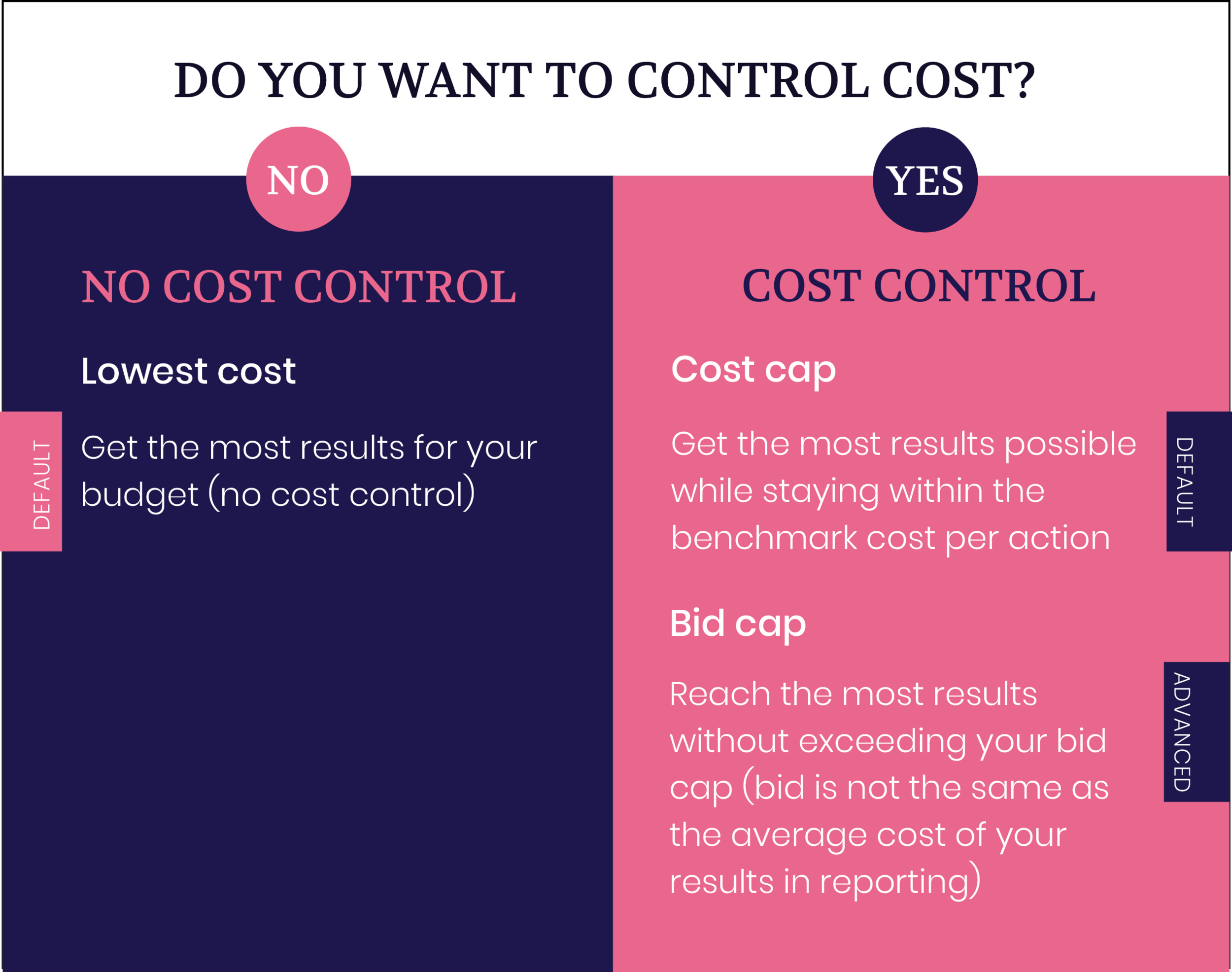Optimizing Your Customer Acquisition Costs with Facebook Manual Bidding
If you are having issues keeping your Facebook Ads under control, you probably need to try Facebook manual bidding. The platform has different bidding options to control costs and to maximize your results. As a marketer, it is important to understand how these bidding strategies work.
How Facebook’s bidding system works?
The Facebook auction format determines which ads are shown to the user. The winning ad is determined by a combination of different factors: bid, estimated action rates, and ad quality. The advertiser who is able to deliver the highest total value, the combination of the three factors, will ultimately win the auction.
In a nutshell, your bidding strategy is a key component for boosting or degrading your results.
You can either set your own bids, or let Facebook automate the bidding process (this is the default option), also called the ‘Lowest Cost’ option.
Let’s get into the specifics for each bidding strategy.
Lowest Cost Bid Strategy
This strategy will help you achieve the lowest possible cost for your results while spending all your budget - Basically, you’re telling Facebook to get you the most efficient results while ensuring you don’t underspend for the campaigns’ flight duration. The downside is that results might fluctuate a lot depending on how your spending levels vary and how many competitors enter the auction at a given time.
Highest Value Bid Strategy
This option will spend all of your budget and it will focus on getting you the highest value purchases. An e-commerce store can use this strategy to sell more of their top-products in order to maximize their ROAS. The downside is that Facebook won’t go after the most efficient auctions, it will only go after conversions that will bring you the highest value.
Cost Cap Bid Strategy
This strategy will help you achieve a high volume of conversion while preventing your campaign from paying extra dollars for those conversions. Basically, you are telling Facebook to only get results under the cap amount you set. If you have strict CPA goals to achieve, you can test this strategy. The downside of this strategy is that it typically takes longer than other bid strategies to exit the learning phase. During the learning period Facebook may or may not exceed your cap.
Facebook recommends a daily budget that is at least five times higher than your bid cap. This is because Facebook needs at least 50 events (the learning phase) within a week to properly optimize.
Minimum ROAS Bid Strategy
To be able to test this type of bidding strategy you need to make sure you are tracking purchases on Facebook. You also need to have catalog campaigns in place. By using this strategy, you are telling Facebook to only deliver your ads when the estimated results will meet your minimum ROAS. The downside is that you might see higher acquisition costs since Facebook will only go after those users who can give you the minimum return on ad spend - At times, those are expensive users. This option is also limited to accounts with 100+ optimized purchases.
Facebook has the perfect example on how to use this strategy - if you want your budget of $100 to produce at least $110 in purchases (or a 110% return), you'd set your ROAS control at 1.100.
Bid Cap Bid Strategy
In this strategy you are telling Facebook how much you’re willing to pay for a conversion. The platform will try to get you as many conversions as possible without exceeding your bid cap, unlike cost cap, here Facebook won’t enter auctions higher than the bid you set.The downside is that this strategy typically needs frequent bid changes and you’ll need to be able to set the right bid based on projected conversion rates or LTV models so you don’t miss opportunities.
What Happened When We Tested Cost Cap vs. Lowest Conversions?
At Pennock, we wanted to help a client scale up conversions while optimizing their acquisition costs. Below are the results from implementing two ad-groups with different bidding strategies - Lowest Cost & Bid Cap. Since we knew the client needed conversions under $3 to make the investment on Facebook worth pursuing, we set a $3.00 bid cap within one of our ad groups and we let it run against the group with the lowest cost bid strategy. The results below show a 23% decrease in CPA for the group using the bid cap. This strategy proved to be better in terms of driving efficient conversion volume.
* 10-days total
Final Thoughts
There isn’t a universal strategy for all companies and results may vary by industry - Don’t be afraid to try multiple bidding options when launching your campaigns. There are bidding strategies that can help you scale your campaigns while still achieving cost-efficient results!
Learn more about Facebook’s bidding strategies here!
Need help calculating ROAS?



